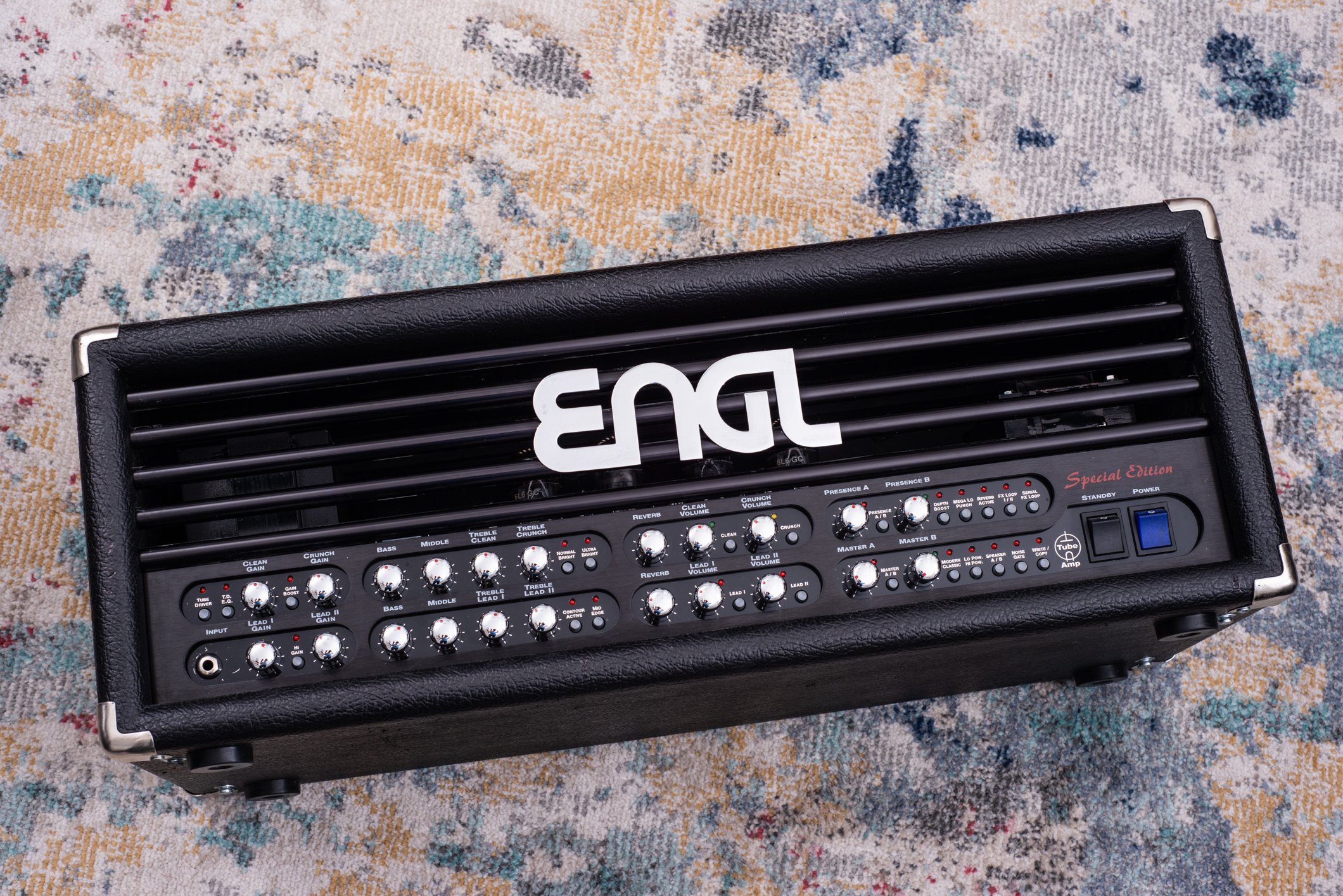This top of the line ENGL Amp has always eluded me, but when I found this one online at Guitar Center I pulled the trigger. Sadly, the order was cancelled - I called the store, and apparently someone else had bought it first. Damn.
Lucky for me, it popped up, returned, at another GC several states away from its origin in Texas. I’m not sure why it was returned, but I ordered it again and it arrived a few days later in very good condition.
I’m still trying to wrap my head around why this was returned - it was expensive, but quite a deal compared to other E670’s on the market, and far cheaper than the new E670FE Founder’s Edition amps (effectively, a reissue of this amp with a few circuit tweaks).
Speaking of the newer E670FE, and maybe this is confirmation bias, but I’m glad I have this earlier amp - it’s a little bit more feature heavy. The new FE version does not have the high/low power mode (disables two power tubes, knocking the amp down to 50w), the cable tester on the rear panel, or the switchable output section. This original E670 can actually be connected to two different speaker cabinets, with different impedences, and you can set which channels, or which patches, use speaker output A or B. This means if you want to run your cleans through a cabinet with Jensens, and your drive channels through a cabinet with Celestions, you can do that! Super cool feature, but maybe underutilized or underappreciated in the real world.
There are other differences between the FE and SE, but they are harder to quantify - supposedly it has been revoiced, and the clean/crunch channels on the FE have a mid shift and bright switch, while the SE has a bright and ultra bright switch. However, based on my knowledge of other ENGL stuff, I think it’s more likely these switches do the same things on both amps and have simply be renamed - perhaps the exact value of the resistor or capacitor it puts into the circuit has changed, but it’s still going to be effectively the same function.
Ok, features aside, I am absolutely thrilled with how this amp sounds. All of the channels are absolutely superb - I can see how someone could get this amp and replace an entire collection of other amps - I very rarely feel that way about channel switchers, and looking at my collection of course in most cases I’d rather have multiple single channel amps than one channel switcher - so that’s especially high praise coming from me. Both of the lead channels are nearly the same, in a good way, with Lead II having a hair more gain, but a separate treble control which is very useful. The clean/crunch channels share the same layout, with shared bass and mid controls but separate treble controls. Even the “bypass” channel, which is just a raw tube drive with no shaping designed more as a straight through power amp channel, sounds great - and can be enabled with or without the EQ. It’s hard not to talk about the features at the same time - all four of these channels have a high and low gain mode and multiple switches that can color the tone - and even better, all of these switches can be controlled via saving the setting on the footswitch or midi controller. It really feels like you could do anything you desire with a nice 10 button midi switch and this amp, from all ranges of gain, voicing, power amp settings (there are 2 presence controls and 2 master volumes to switch between as well, plus depth and low punch, and more).
Some might think well, this amp isn’t for me - too much tweaking, and that’s fine - especially in contrast to the 3rd Power HLH100 I picked up last month, two amps with completely opposite design philosophies. However, I have to say, I spent about 2 hours dialing in this amp and saving 10 really great sounds to the Z9 footswitch, and I don’t think I’ll ever touch another control on the amp again besides the power and standby switches. Yes there’s tons of tweakability, but if you find some great tones you can just save them - probably an exciting new concept when this amp was introduced in 2008 but these days we’re a bit spoiled by digital modeling which accomplishes a similar goal… but this amp keeps the real tubes cooking. Definitely a winner in my book, I’ll have to compare it to my favorite ENGL (the Savage 120 MK1).

